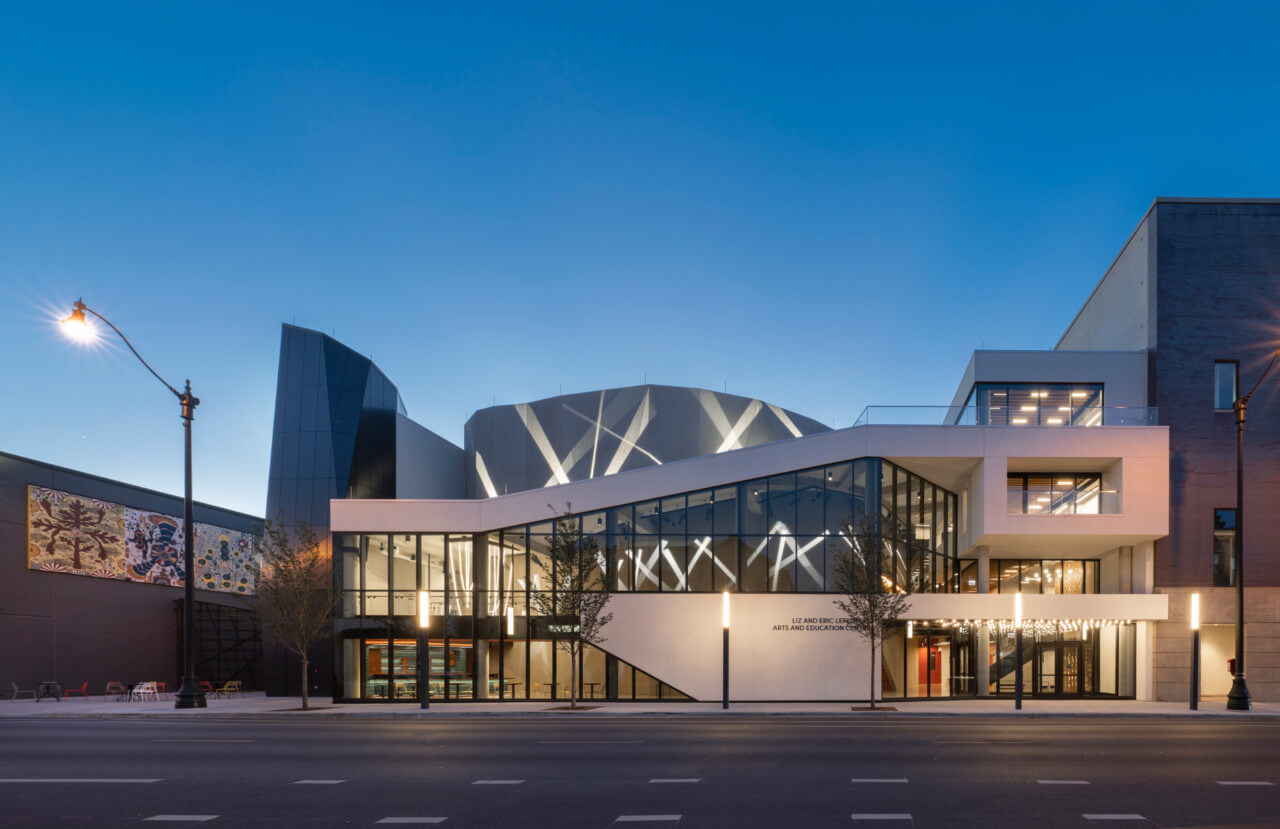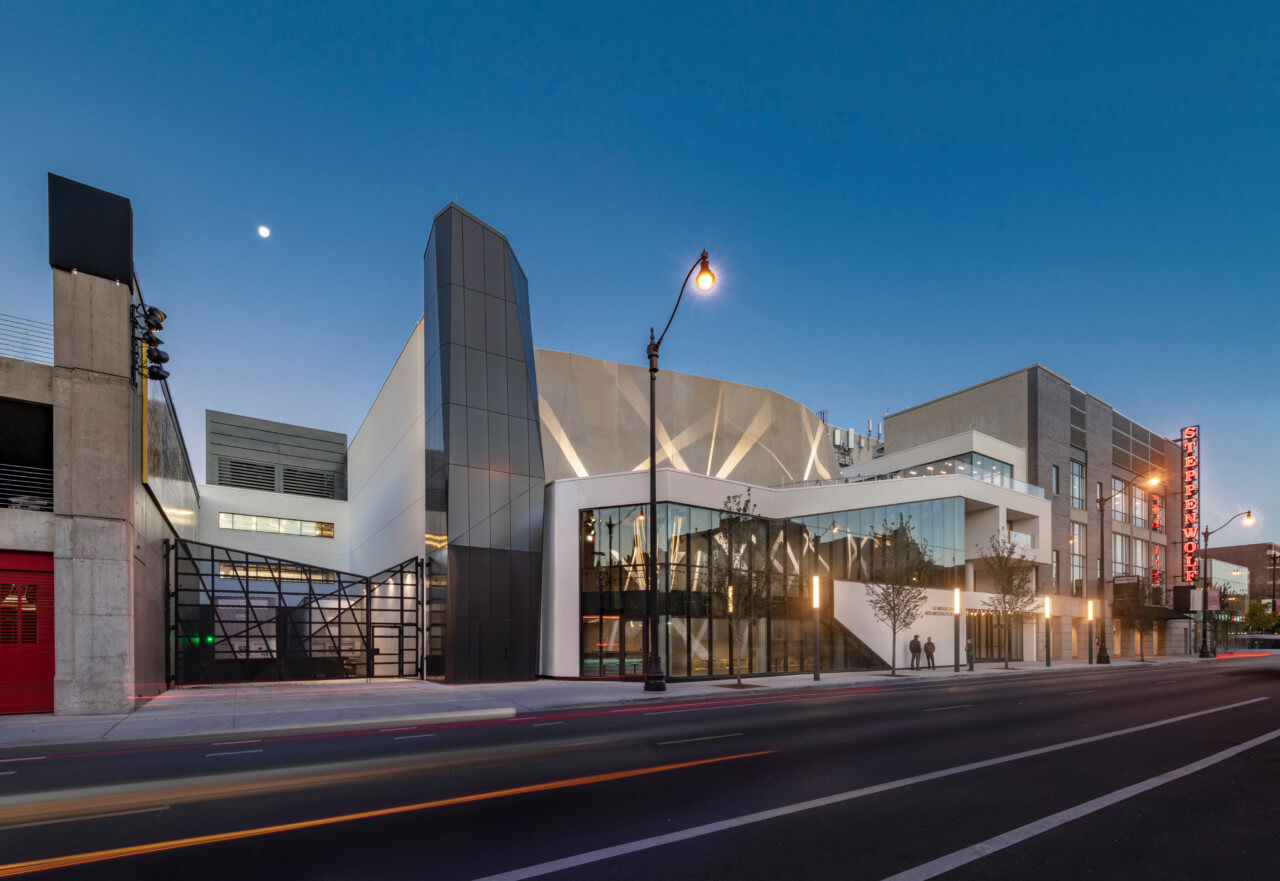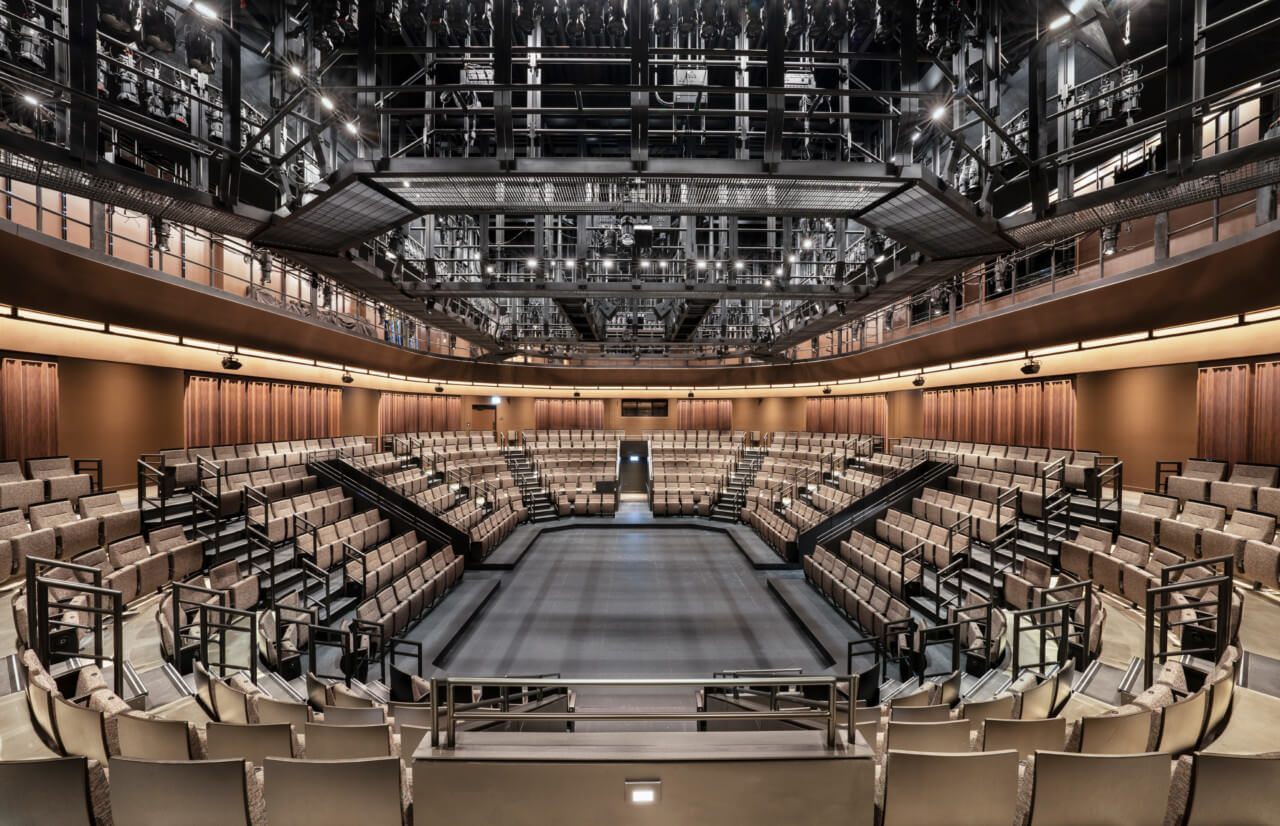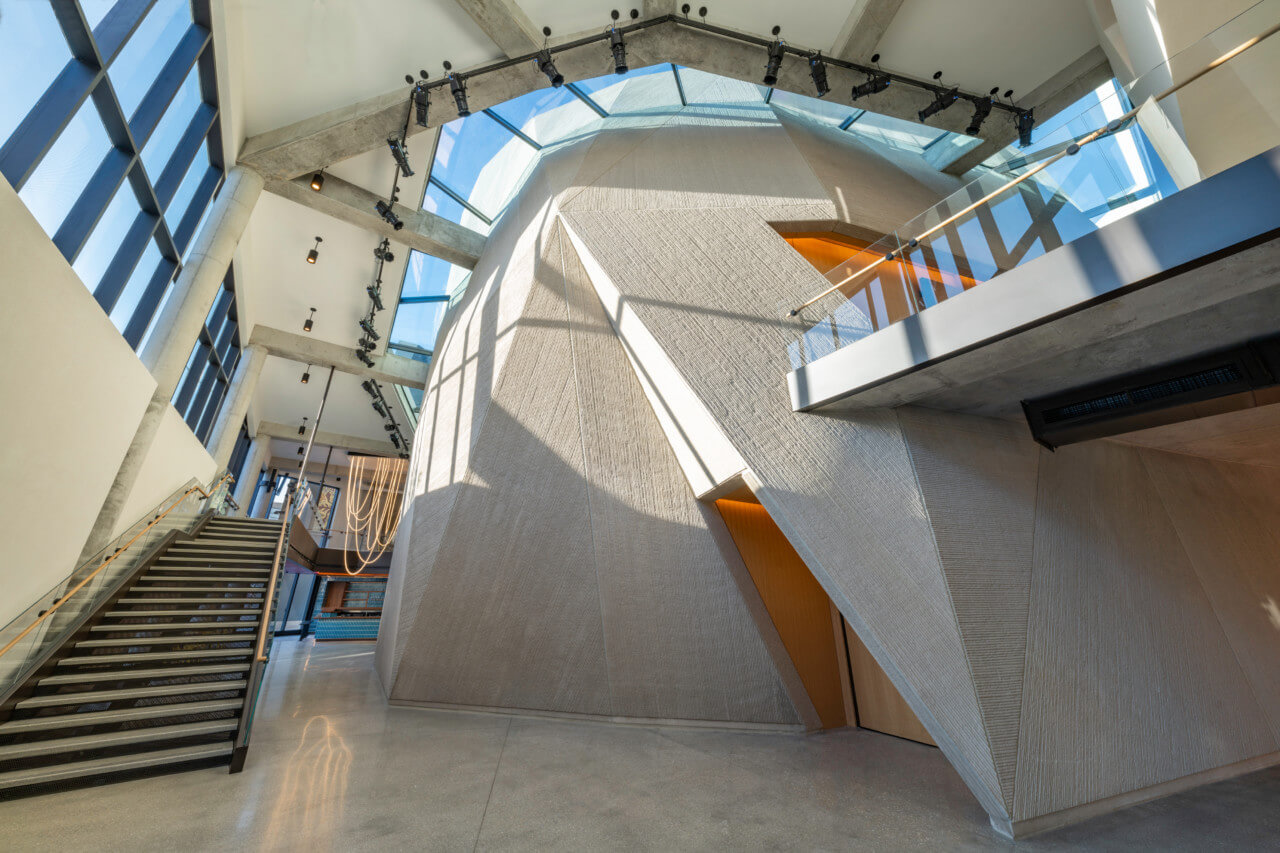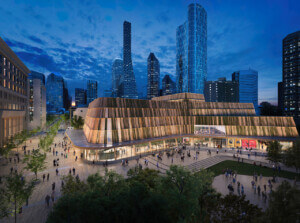Spending closing night of A Christmas Carol in the company of theater geeks—but not being one myself—I watched enviously as my peers galloped and hollered at the cast party in our high school theater backstage. They navigated around strange machineries, like lights and scaffolds and a forest of ropes dangling from ethereal catwalks, disappearing behind doors to reemerge on stage; they knew where all the trapdoors were. Theaters, I learned from this close vantage, are places for architectural magic. What I experienced as a 16-year-old taught me that the back-of-house isn’t only a means to magic but is itself a space of fantasy; what happens architecturally in public must be met with excellence behind the scenes.
Magic and high school drama were on my mind as I toured Adrian Smith + Gordon Gill Architecture’s (ASGG) new addition to the Steppenwolf Theatre campus in Chicago, where it seems that the firm has adopted the role of magician as well as architect.
Though Steppenwolf started out as a scrappy theater company in 1974, it has grown in prestige and audience reach. Its physical space has also expanded through acquiring neighboring properties to the north and, later, to the south. The first phase of the expansion project, completed in 2016 also by ASGG, added a public cafe and community-accessible black-box theater space on the north end of the ground floor. The second phase, completed this past fall, bookends the original theater’s south end, adding a plethora of public-facing amenities like a two-story atrium and two bars. The atrium is conventionally pleasing, using materials like polished concrete and glass to create a sophisticated-yet-industrial feel. Perhaps it felt dull to me because it was empty, but who these days—two years into a pandemic—can imagine a theater atrium aglow and filled with buzzing crowds?
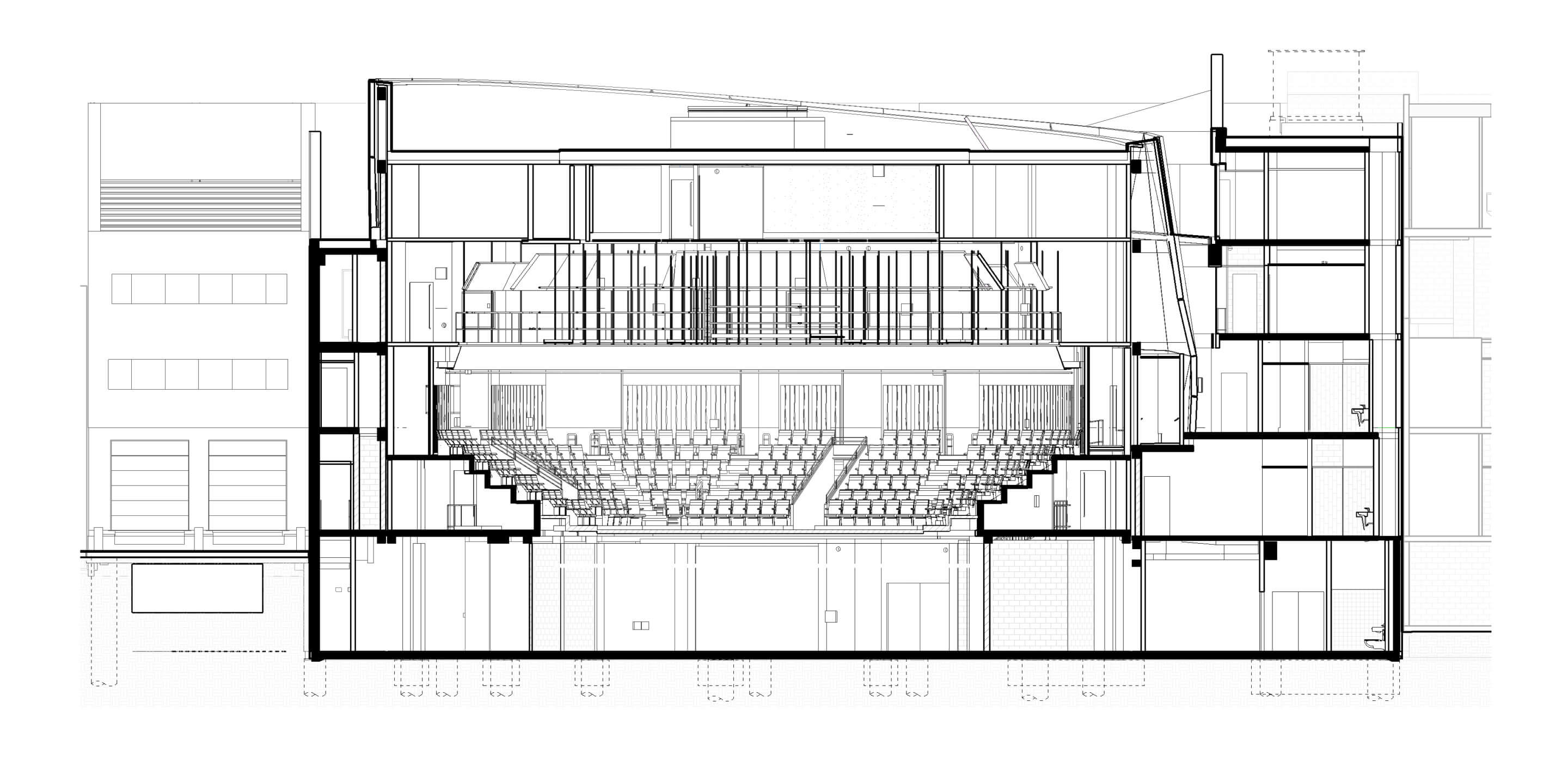
The lackluster atrium stands in contrast to the new, flexible theater-in-the-round that is positioned as the beating heart of ASGG’s addition. Clad in textured gray glass fiber reinforced concrete (GFRC) panels, and ringed by the atrium, the mass of the Ensemble Theater resembles a geometric asteroid in a museum display. Its massive girth and towering height—the volume extends past the atrium roofline—create an identifiable, if ambiguous, cap atop the new addition, providing some visual interest from the nearby El train.
Inside, the architects have created a highly flexible venue, with 500 seats set around an ovular stage that to me felt surprisingly small in comparison with the exterior’s gargantuan geometry. Seating rows or sections can be removed or added, I learned, allowing the stage to grow from 900 square feet to 2,500 and audience capacity from 250 to 500; the vom can be moved, widened, or eliminated entirely. The stage itself comprises individual square platform panels that can be removed or lowered, and with the generous 15-foot trap room beneath, sets can “grow” from the theater substrate. Suspended 33 feet over the stage, the grid, with its movable componentry, can enable “one million lighting positions,” according to Steppenwolf executive director Brooke Flanagan. Thanks to this fly system, performances can move vertically rather than simply horizontally and set designers can flex their creative muscles. The promise is one of exhilarating and intimate—all seats are within 20 feet of the stage—experiences for audiences.
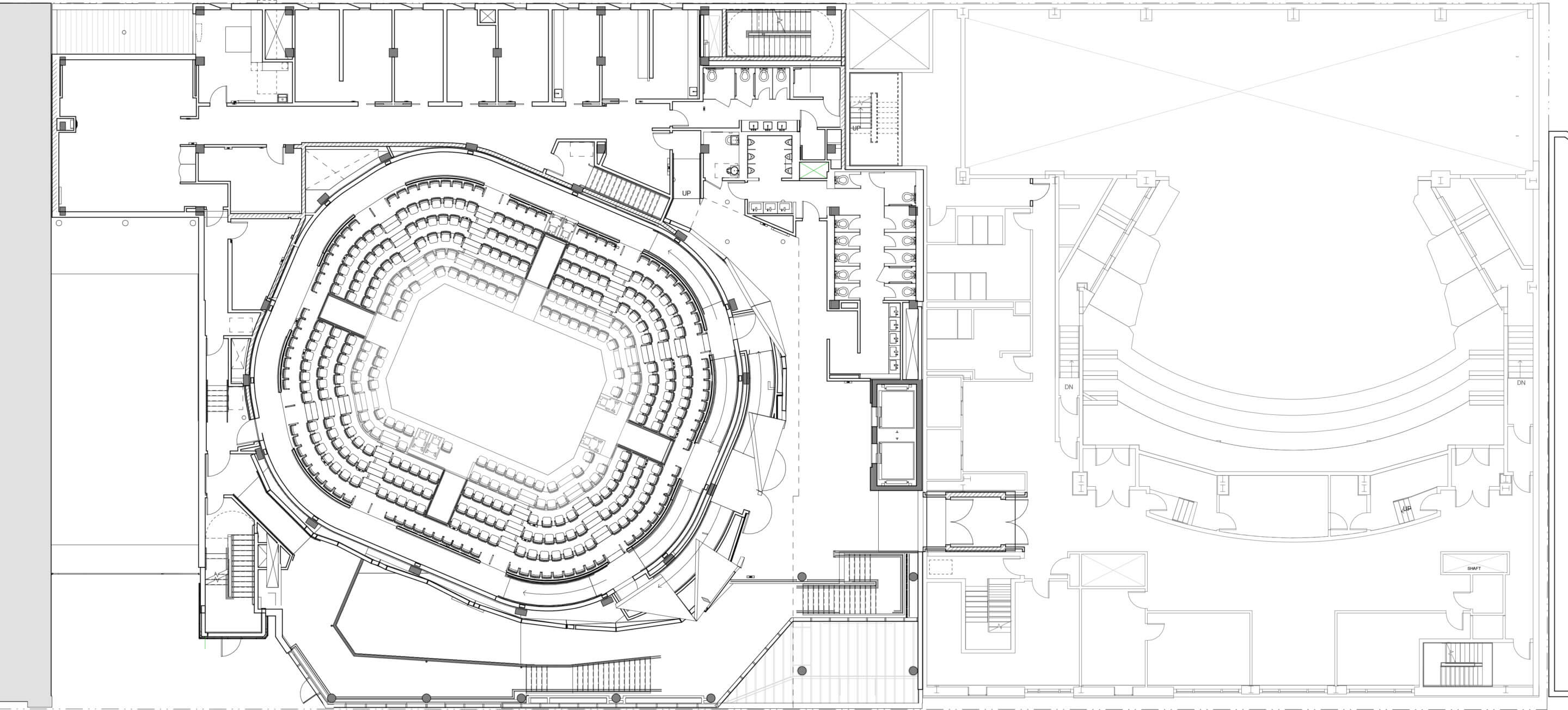
Exiting the Ensemble Theater from the second floor leads audiences to an intermission bar, the last public space in the new addition. New back-of-house spaces include six dressing rooms and a green room, while the third floor houses the company’s script library and costume shop. Most impressive of all is the top fourth floor, which is dedicated to youth programming and theater education. A bright, naturally lit corridor that wraps around the Ensemble Theater’s pointed roof connects three teen spaces—the Lab, the Maker Studio, and the Reflection Gallery, each one outfitted with colorful acoustic paneling and springboard floors—leading to a small patio with views up and down Halsted Street. It is a startling amount of space—prime real estate at that—to devote to young people who are learning about theater. These classrooms won’t accommodate large groups of donors at a fundraiser; the rooftop patio could fit ten comfortably. These are places for youth, and for nobody else, and that’s where we return to magic.
As so many theater critics have said, the magic of the theater happens when the story—the script, performances, makeup, and costumes, all revolving around a backdrop of sets and props—transports an audience to other places. But when you’re an architecture critic, the fantasticism of theater reveals itself in the structures that support all its other elements, on stage and off. The Ensemble Theater’s otherworldly exterior is a sleight of hand on the part of the architects—we’re looking at the left hand while the right, well, the right hand is 30 feet above you in the catwalk. The new addition to the Steppenwolf Theatre is a testament to back-of-house enchantment: the secrets in the stage trap or above the light rigs that allow sets to soar; the urban aerie where youth can experiment, play, and collaborate among themselves without having to share space with wine-guzzling donors. What happens in secret is key to magic making, and the magician never reveals their tricks.
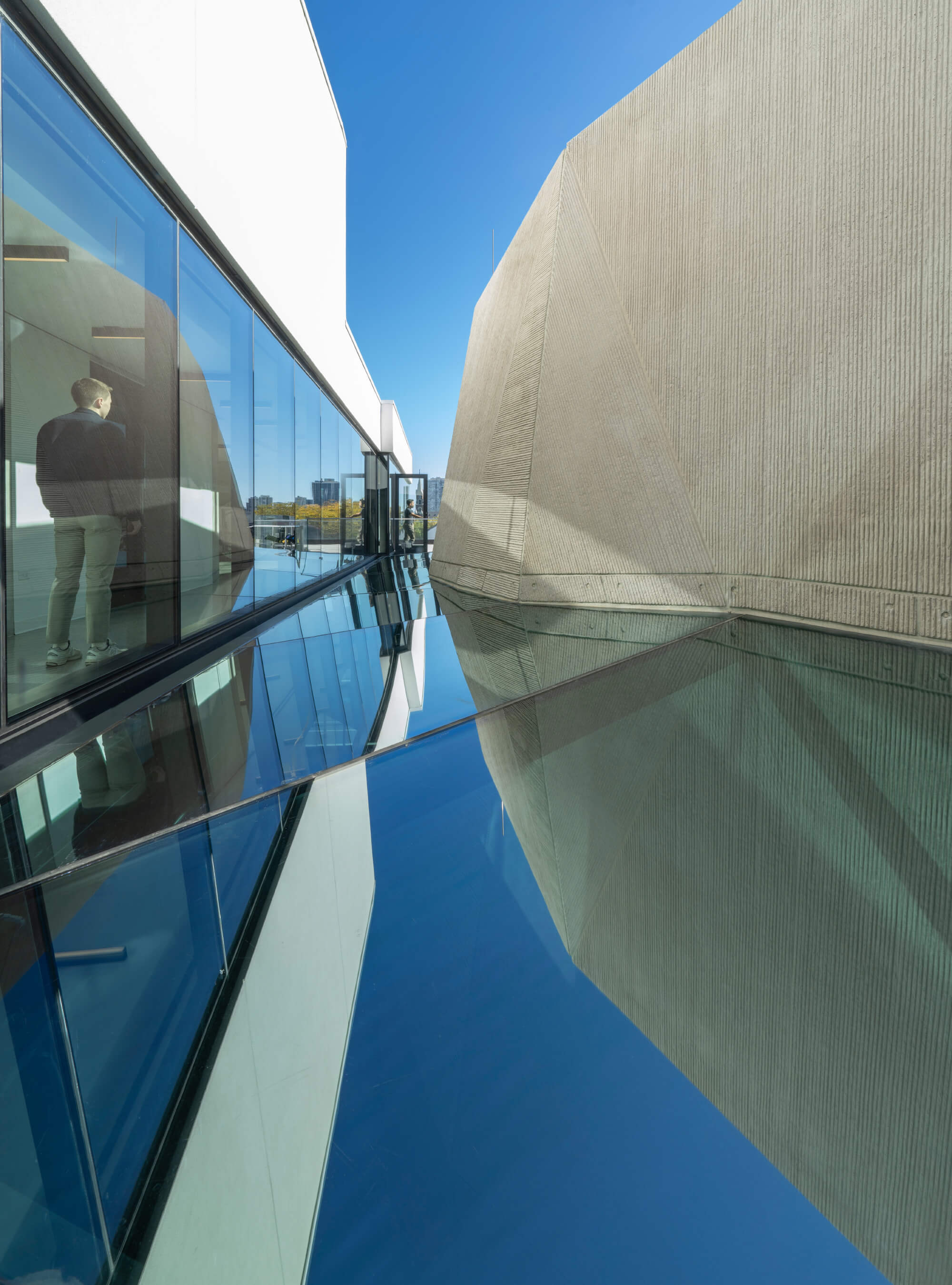
Steppenwolf Theatre
Design architect: Adrian Smith + Gordon Gill Architecture
Location: Chicago
Landscape architect: Oslund and Associates
Structural engineering: Thornton Tomasetti
Electrical engineering: Environmental Systems Design
Civil engineering: Spaceco
Lighting design: Morlights
Theatre consultant: Charcoalblue
The Steppenwolf Theatre’s Ensemble Theater will open its first show, Seagull, on April 28.
Anjulie Rao is a Chicago-based journalist covering the built environment.






